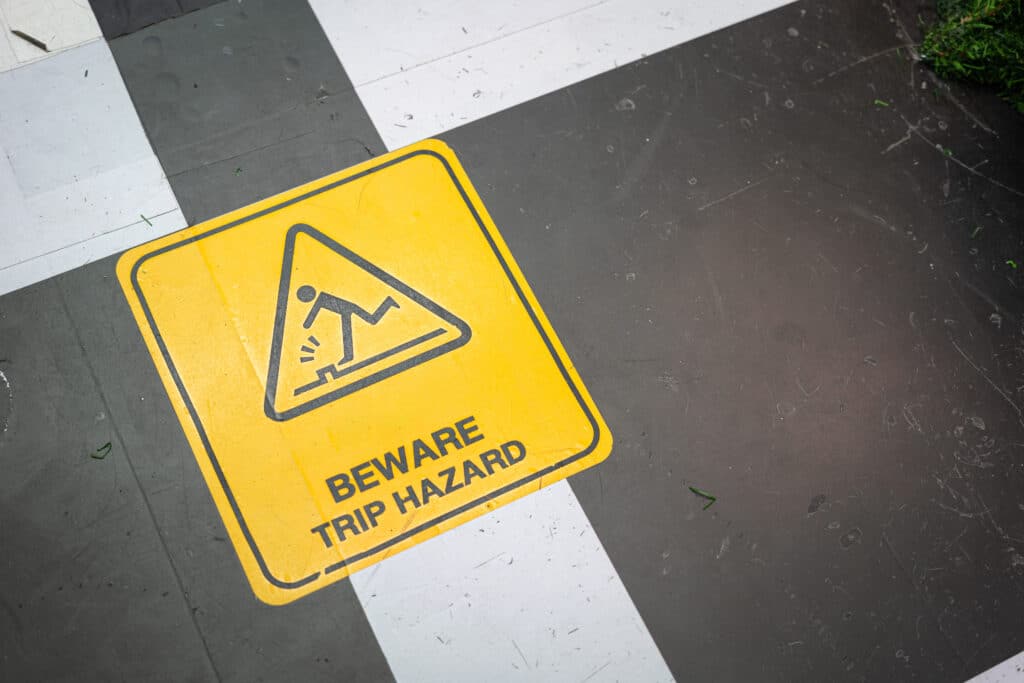Welcome to the final installment of DORN’s National Safety Month blog series! Throughout June, we have delved into some of the most crucial topics in workplace safety and wellness. If you missed any of our previous posts, you can catch up on them here:
This week, let’s dive into a topic that will be familiar to all safety professionals but remains a challenge as one of the primary causes of workplace injury: slips, trips, and falls.
Slips, Trips, and Falls by the Numbers
Slips, trips, and falls have long contributed to overall injury numbers and rates regardless of industry. According to the National Safety Council, falls are the third most common cause of occupational injury resulting in days away from work, with the industries facing the greatest risk being transportation, warehousing, and agriculture. This category accounts for 20% of all injuries that require time away from work.
Consider these other figures about slips, trips, and falls:
- 450,540 total injuries in 2021-2022
- 22.6 injuries per 10,000 workers
- 14 days lost on average per injury
- 865 workers died as a result of a fall in 2022
- Fatalities resulting from falls increased by 1.8% year over year in 2022
Injuries Resulting from Slips, Trips, and Falls
Falls of all types can cause a wide variety of injuries, ranging from minor cuts and bruises to life-threatening spinal fractures or head injuries. Sprains, strains, broken bones, lacerations, and neck injuries are other common injuries. However, while the injuries that can result from falls can be serious or fatal, the majority of these incidents are entirely preventable.
Preventing Slips, Trips, and Falls
During last year’s National Safety Week, Cheryl Roy (DORN Companies National Sales Manager and host of the DORN Injury Prevention Academy Podcast) shared a Safety Minute video on the slip, trip, and fall category. Cheryl offered a few key strategies for mitigating the risk of this type of incident.
- Situational awareness: There’s no substitute for a strong sense of what’s going on in the workplace at all times. Every employee at every level is responsible for keeping their eyes open and their heads on a swivel in the workplace, watching out for hazards that could cause injuries. A strong safety culture can help train employees to stay aware of their surroundings at all times.
- Good housekeeping: Keeping workspaces clean and tidy goes a long way in preventing falls. Many injuries of this type are caused by liquid spills or tripping over obstacles that shouldn’t be present in the workplace. Reducing clutter will reduce fall hazards.
- Good lighting: Keeping the lighting in working order at all times will ensure that facilities are properly illuminated, making it easier for workers to spot hazards before they cause falls.
- Clear signage: Posters, signs, and handouts that identify consistent hazards in the workplace will help employees maintain situational awareness and know which areas may be hazardous to enter.
- Fast cleanup: When spills occur or other hazards such as ice appear in or near workplaces, it’s up to employers to be prompt about cleaning up messes and applying treatments that improve traction and prevent slips.
- Proper footwear: Shoes with good traction are key for many work environments, from construction sites and warehouses to kitchens and laboratories. Mandating high-traction shoes will help employees stay on their feet and avoid injury.
Thank you for joining us for this year’s National Safety Month! Remember to check the DORN blog frequently for more articles, case studies, and other important insights from the world of workplace safety and wellness.


